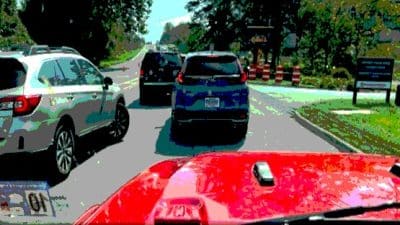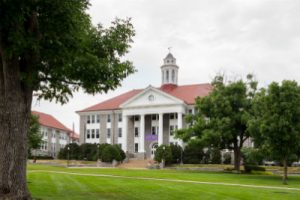
Addressing the 60+ attendees, State Sen. Emmett Hanger, R-Mount Solon, noted the shift in Virginia’s rural-urban populations and the resulting impact on urban conservation, to include storm water runoff and its costly effects – that is, the huge sums spent on water treatment to remove pollutants. The senator called for significant increases in the everyday use of non-potable water (e.g., toilets and yard watering), which he claimed would save hundreds of millions of dollars once widely implemented. Hanger also reminded districts that the historical reliance on data from government-subsidized conservation practices provided imperfect estimates on watershed pollutant levels. He encouraged districts to find ways to capture the untracked impact of voluntary conservation practices to more precisely identify and monitor contaminants.
Like his Senate colleague, State Sen. Creigh Deeds, D-Bath, stressed the importance of conservation, but warned Districts that Richmond is notoriously frugal, a fact borne out in Virginia’s last-place ranking in per capita spending on conservation. Deeds cautioned districts that Virginia will suffer greatly from federal budget cuts, as Washington has provided most of the funding for the Commonwealth’s conservation program.
Ed Overton, president of the Virginia Association of Soil & Water Conservation Districts, said the Association was “grateful to the Senate and House for recognizing the significance of the districts’ work in addressing statewide water quality issues.” He thanked the senators and their colleagues for appropriating one million dollars of the $2.8 million requested to implement Virginia’s Chesapeake Bay Watershed Implementation Plan, approved by the Environmental Protection Agency in late November.
David Kriz of USDA’s Natural Resources Conservation Service cautioned that forthcoming Federal budget cuts will soon force NRCS to push more conservation issues to partner agencies – including Virginia’s 47 Conservation Districts. Meanwhile, Jim Echols, regional manager for the Virginia Department of Conservation and Recreation, warned conservation staff and leaders about the difficult challenge districts face in educating Virginians unaware of the scope, depth, and size of the Chesapeake Bay watershed. The Chesapeake Bay WIP identifies numerous actions needed to reduce major sources of nitrogen, phosphorus, and sediment flowing into the Bay. Key sources targeted under the plan include sewage treatment plants, industrial facilities, urban areas, septic systems, and the agricultural and forestry sectors.
The VASWCD is addressing the skyrocketing importance of urban conservation with the creation of a dual-track program to aid the 30 percent of Virginians living in urban areas. The first component of this initiative is securing a grant to establish a pilot urban “cost-share” program. The second facet, modeled after successful efforts in Illinois and North Carolina, is the establishment of a diverse program of urban-focused options from streambed restoration and rain gardens to education and training in Low-Impact Development.
Individuals interested in learning more about the key roles conservation plays in the lives of all Virginians should contact their local Soil and Water Conservation District or the Virginia Association of Soil and Water Conservation Districts at 804.559.0324. Additional information is available online at www.vaswcd.org.










